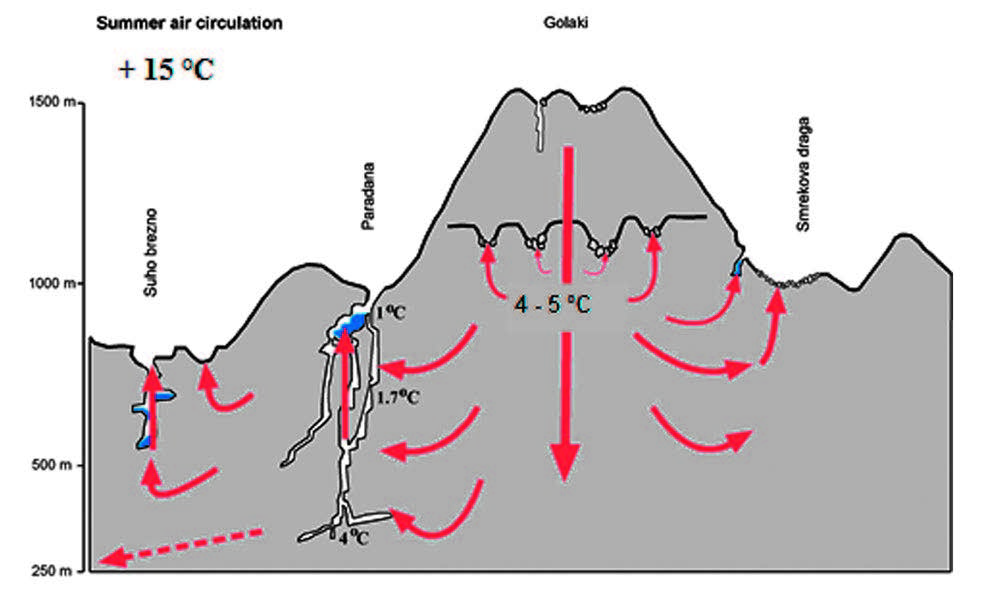Ice in caves and its effect on thermal inversion and permafrost in the case of the Velika ledena jama v Paradani, Smrekova draga and neighbouring dolines
DOI:
https://doi.org/10.3986/ac.v50i2-3.10495Keywords:
karst, ice cave, blowholes, doline, cave climate, topoclimate, permafrost, thermal inversionAbstract
In the Velika ledena jama v Paradani, in the karstic blowholes on the slopes of Smrekova draga and in the nearby dolines I measured and interpreted air temperatures and the effect of the summer outflow of cold air from them into the surrounding area. In winter, cold air enters the cave, radically cooling the entrance part of the cave, where for this reason there is permanent cave ice. The summertime circulation is reversed: emerging from the inner part of cave, which has an average temperature of around 4° C, is air which only when it transits through the sub-cooled entrance part is then cooled to around 1° C. This air comes to the surface and in the hollow at the cave entrance maintains a distinct thermal inversion during the warm part of the year. There is a similar air circulation and similar development of annual temperatures observed at the vents, where cave air emerges through rubble spread over cave entrances on slopes or at the bottom of dolines. The stable summer air temperatures of around 1° C in the vents where I conducted measurements indicate that underneath them there is also permafrost or sub-cooled rock and permanent ice. This is created and preserved, just like in the caves, due to the advection of cold air in winter. In Trnovski gozd, such karstic permafrost is found at an altitude of 1,100 m above sea level. The outflow of cold air from the vents in the summer, just like inside the cave, causes a distinct thermal inversion in dolines on the surface.
Downloads

Downloads
Published
How to Cite
Issue
Section
License

This work is licensed under a Creative Commons Attribution-NonCommercial-NoDerivatives 4.0 International License.
Authors guarantee that the work is their own original creation and does not infringe any statutory or common-law copyright or any proprietary right of any third party. In case of claims by third parties, authors commit their self to defend the interests of the publisher, and shall cover any potential costs.
More in: Submission chapter




